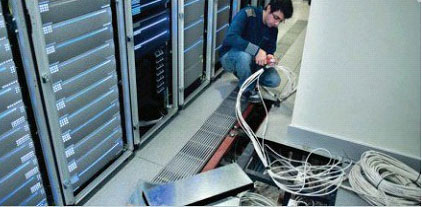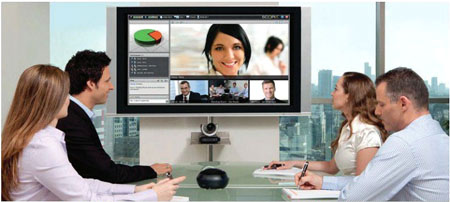
Most likely the network you use now and in the future will be some form of Ethernet. It's the most common network type and its the de facto standard in networking. When planning a network, we need to think fast. Network technologies considered cutting edge only a few years ago are now becoming viable options for network upgrades. The shift is to Gigabit Ethernet, 10-GbE, SANs (storage area networks), and even 40+Gbps connections for enterprise and data center backbones. We build and manage the key elements of your network with caution and care. Our proven skills and expertise helps us deliver the most competent and future proof solutions to you.
When you seek the best in technology, we are poised to offer you world class solutions in
Cabling is one of the most important components of your network and is the most long-lived with an expected tile span of 15-20 years. You'll most likely replace your network equipment three to four times over the life of the cabling system. A structured cabling system that's smartly designed takes careful planning. Systems are more complex now than ever, and will get even more so as speed and bandwidth demands increase. The system you plan today will be supporting new and different applications for many years.
A structured cabling system is as important to the success of your organization as the people are who work in it. A well-planned structured cabling system facilitates the continuous flow of information, enables the sharing of resources, promotes smooth operations, accommodates ever changing technology, offers plenty of room for growth, and evolves with your organization. Plus, it will be around far longer than your current PC, server, and network switches. In essence, a structured cabling system is the lifeblood of your organization. If done right, it will serve you well for years. If not, your organization's growth and bottom line can suffer.

Telepresence is a form of immersive
video communication that creates the impression of being in the same room as
other conference participants. These conference participants appear as
life-size individuals on large plasma, LCD, light-emitting diode or projection
screens. Multiple cameras and microphones pick up individuals or pairs of
individuals, so that all audiovisual information becomes directional with eye
contact and spatial sound aligned with the location of the person speaking.
 The market
for immersive video telepresence systems continues to
gain traction, which, in turn attracts organizations seeking to gain business
value from video
The market
for immersive video telepresence systems continues to
gain traction, which, in turn attracts organizations seeking to gain business
value from video
The introduction of personal and mobile end points is dramatically reshaping the landscape for group video collaboration. IT leaders should align their video portfolios for maximum utilization and strategic fit with their related investments in collaboration and unified communications. The rapid adoption of smart devices, both in the workplace and outside, has raised expectations about accessibility and user experience in the work force. At the same time, device capabilities are multiplying and changing how Individuals and organizations collaborate. It is critical that IT organizations harness these trends to improve staff productivity and team work, as there are risks in not doing so.
Unified communications is a phrase used to describe any communications system, usually a business system that encompasses a broad range of technologies and applications that have been designed, sold and supported as a single communications platform or as one entity. Unified communications systems generally enable companies to use integrated data, video, and voice in one supported product. Unified communications systems typically include the means to integrate real-time or near-real time unified messaging, collaboration and interactive systems. For example, a single user can access a variety of communication applications such as e-mail, SMS, video, fax, voice, and others through a single user mailbox. Additionally, unified communications has expanded to incorporate collaboration and other interactive systems such as scheduling, workflow, instant messaging and voice response systems. Unified communications also provide the integration through multiple devices. For example, many service features, options, and user accounts are as readily available to you from your POA, laptop or other wireless device, as if you were using your desktop PC.

>For the love of the plain old telephone systems, many a people prefer to maintain their legacy PBX systems even now. With the advent of new technology and products, finding support and spare parts for the old systems become a dreadful experience. All the more, personnel with knowledge and experience on such systems are hard to be found. We, with years of experience and knowledge that we have, do not leave the customer haphazard during a technical breakdown. Being able to have been the stockiest partner for popular legacy systems makes us a preferred choice of our customers when it comes to an upgrade or a breakdown.